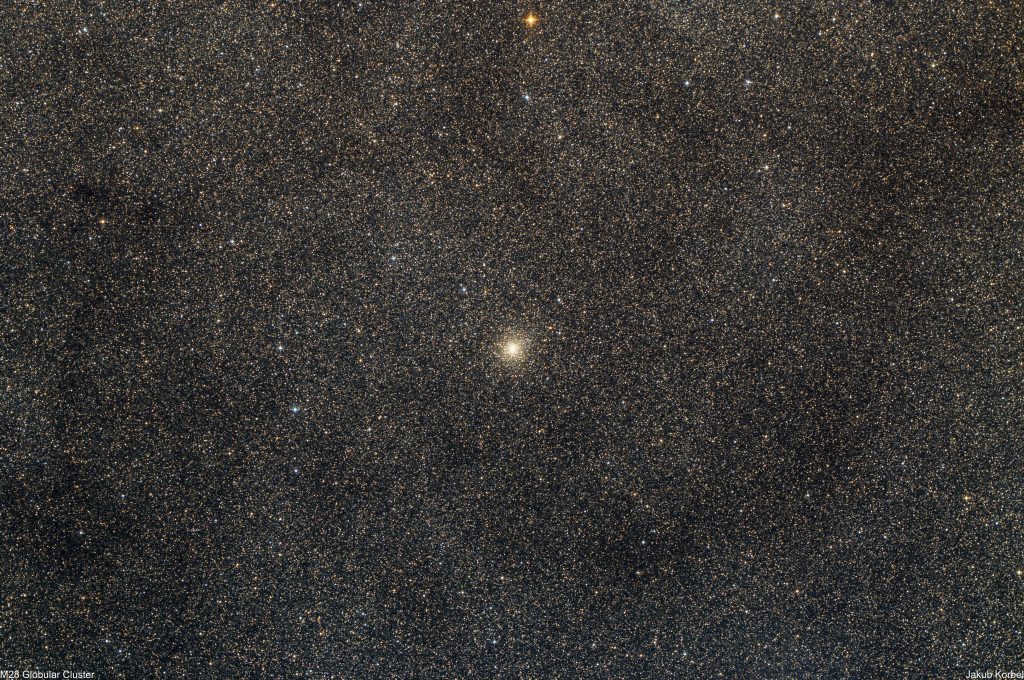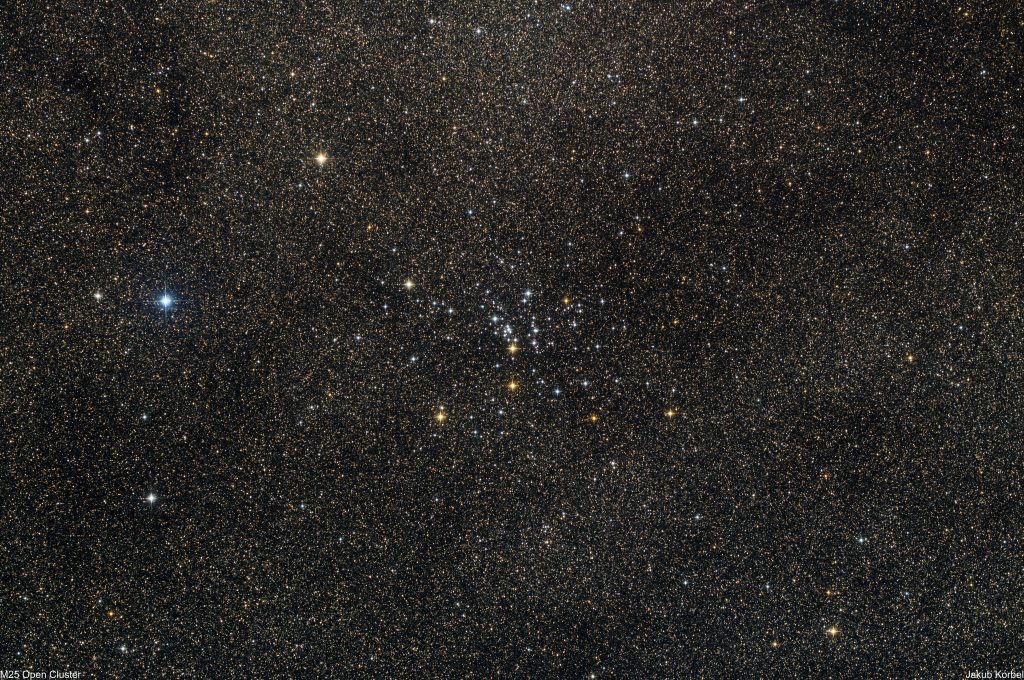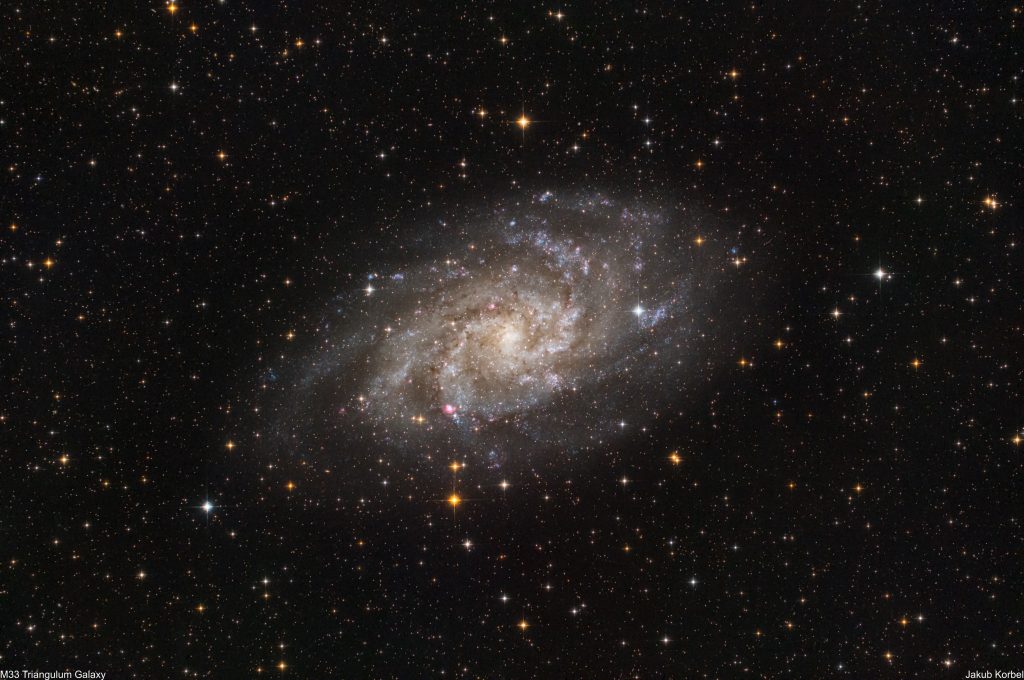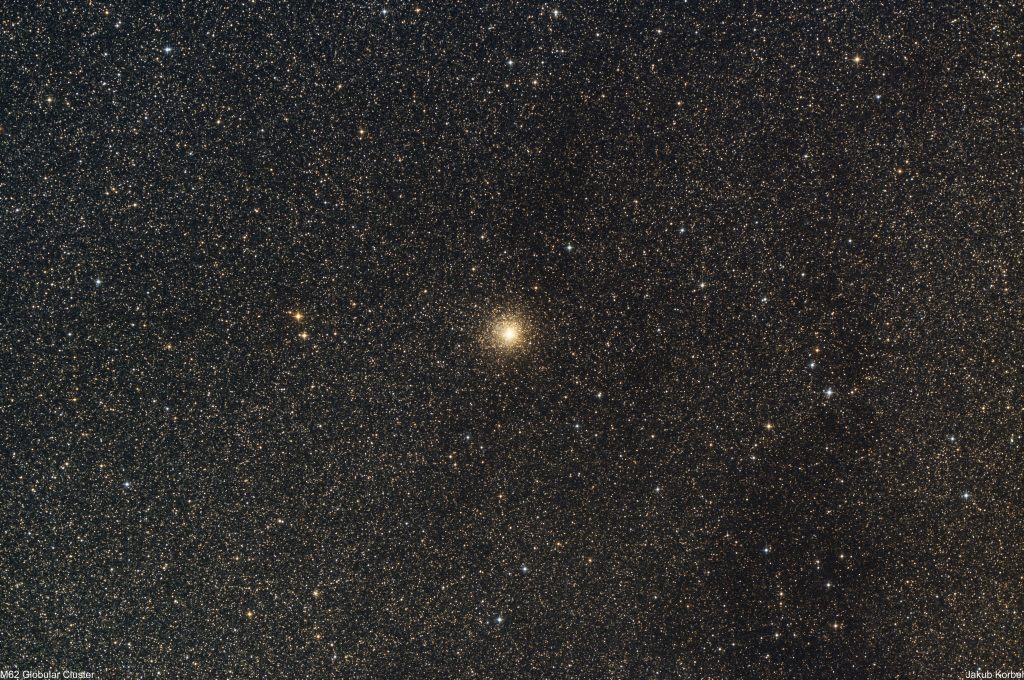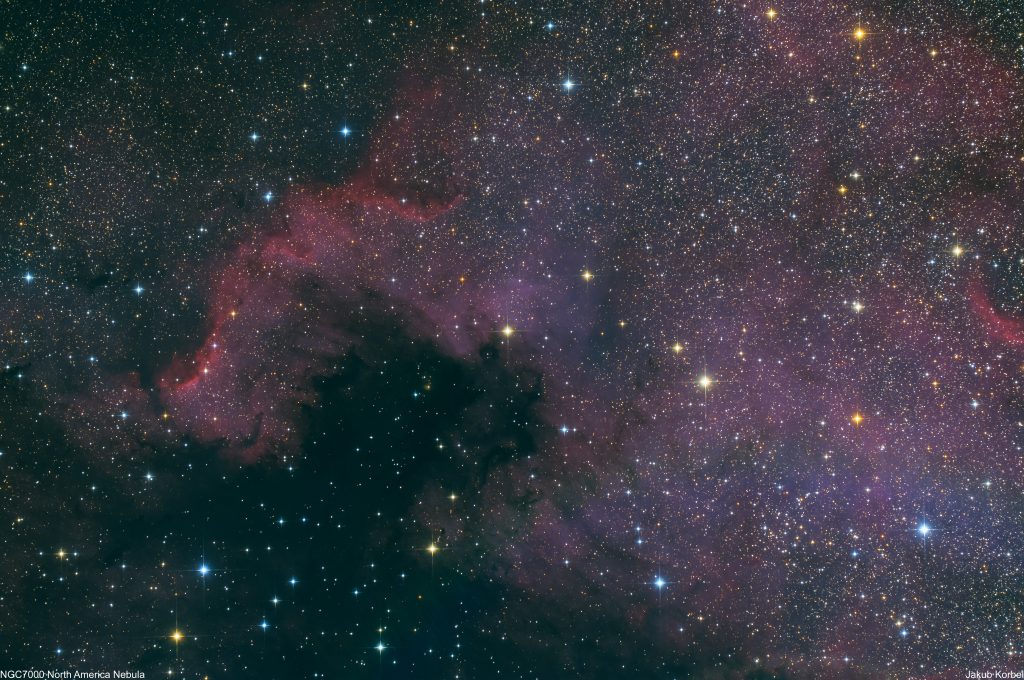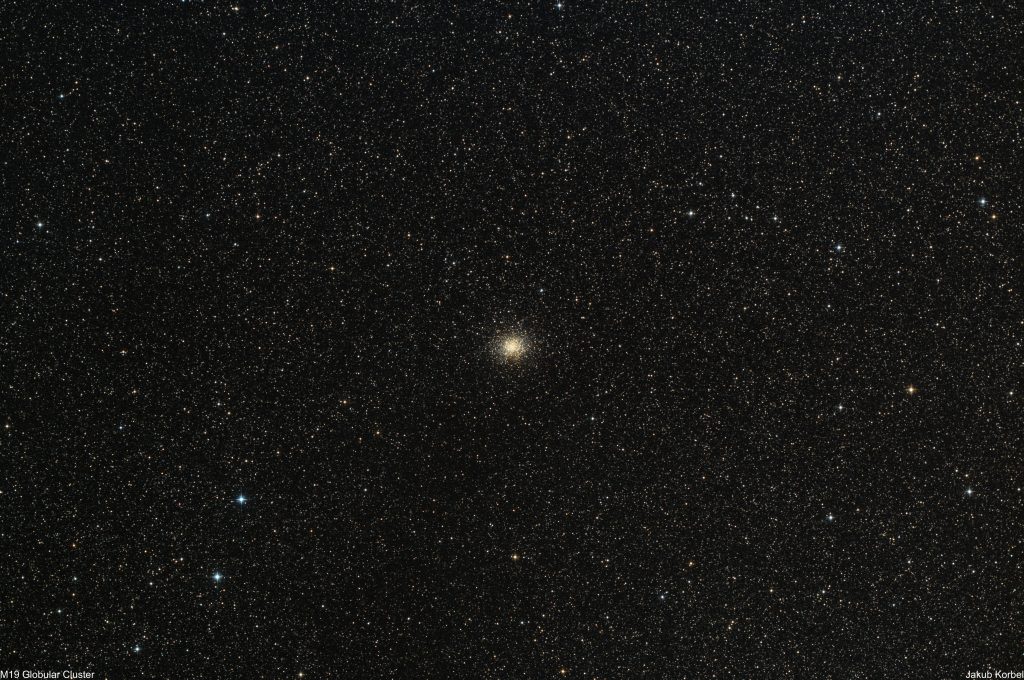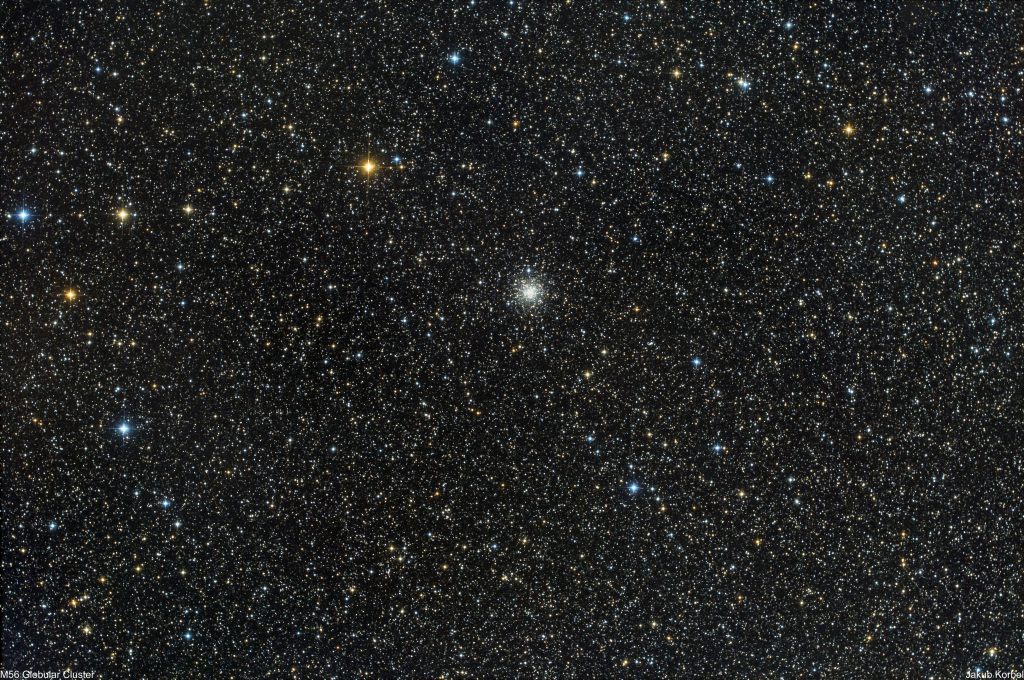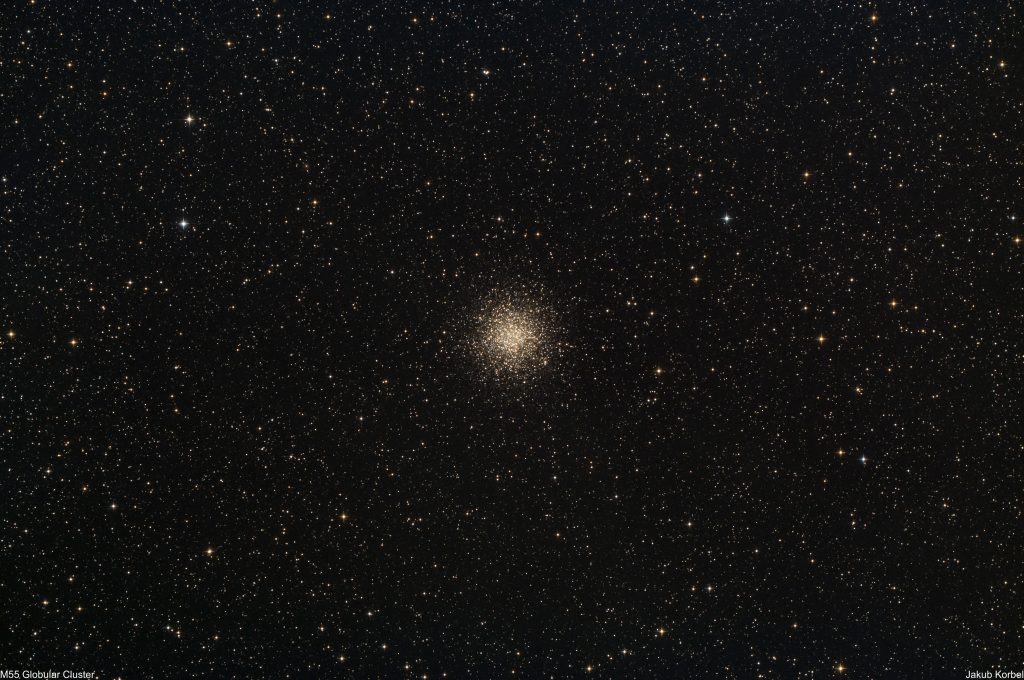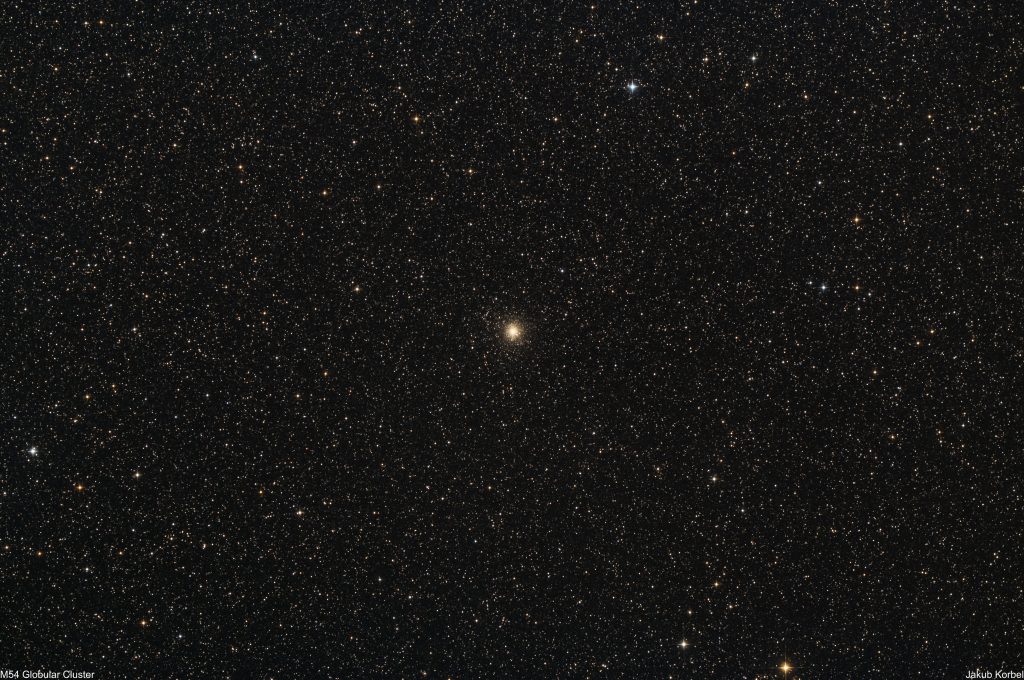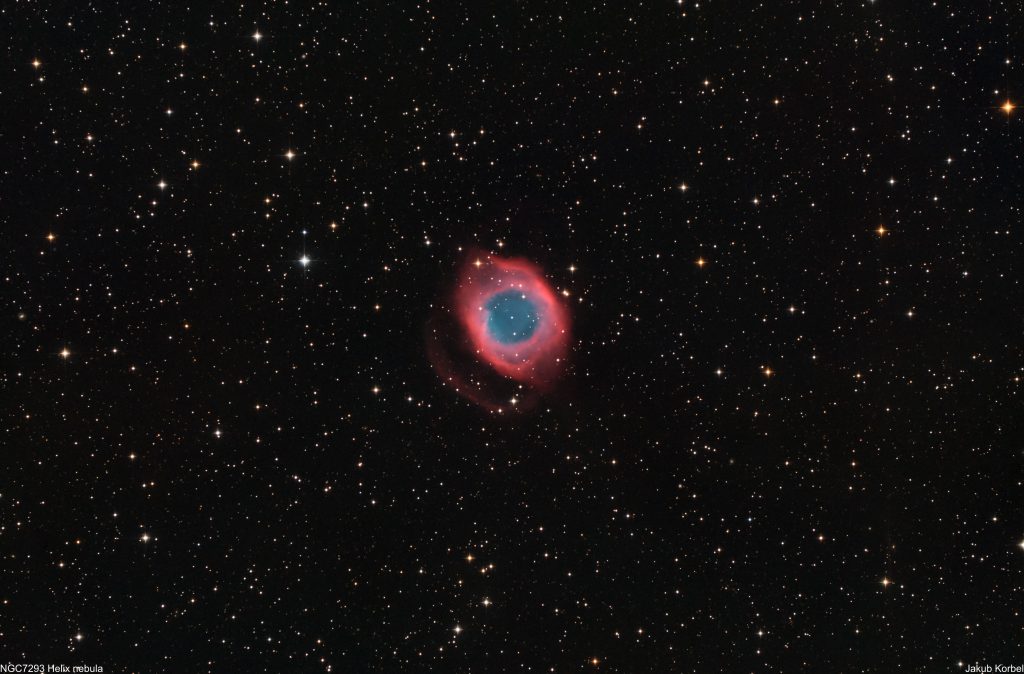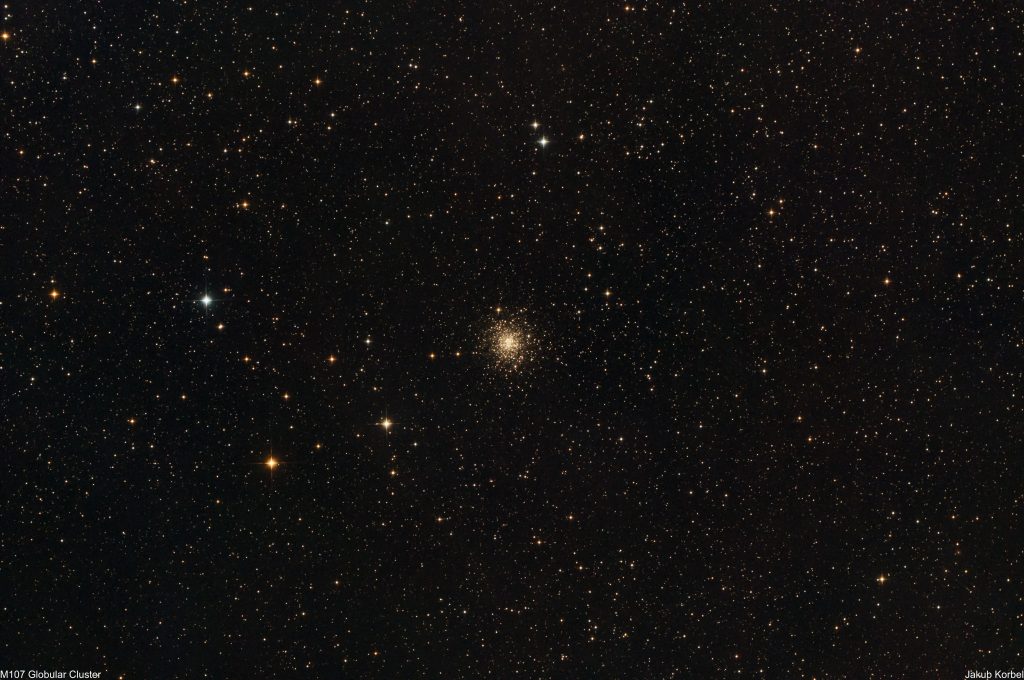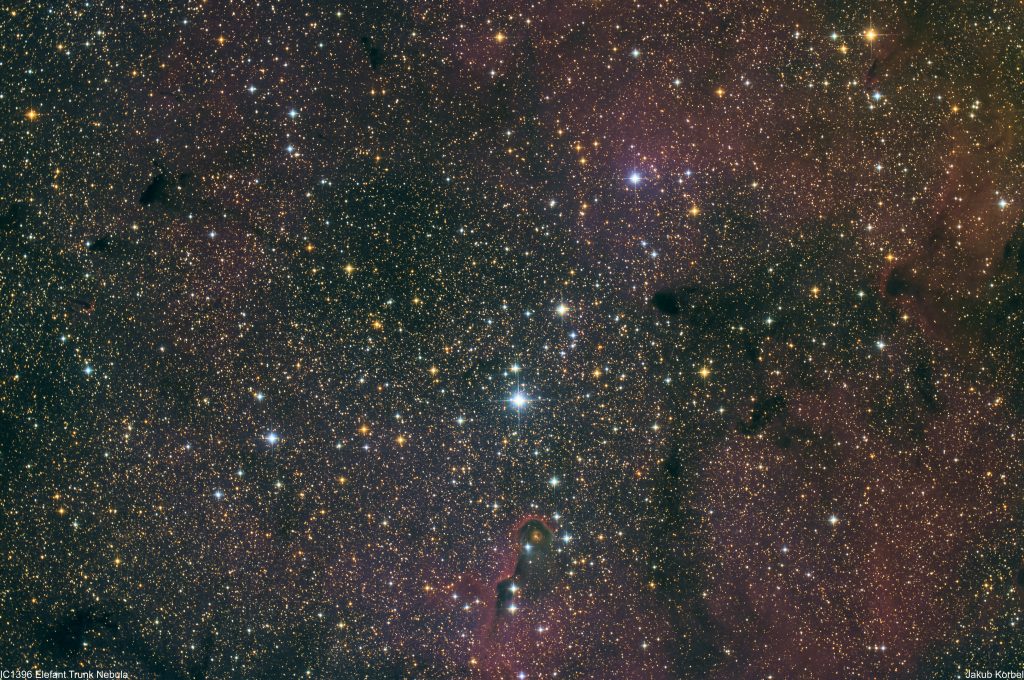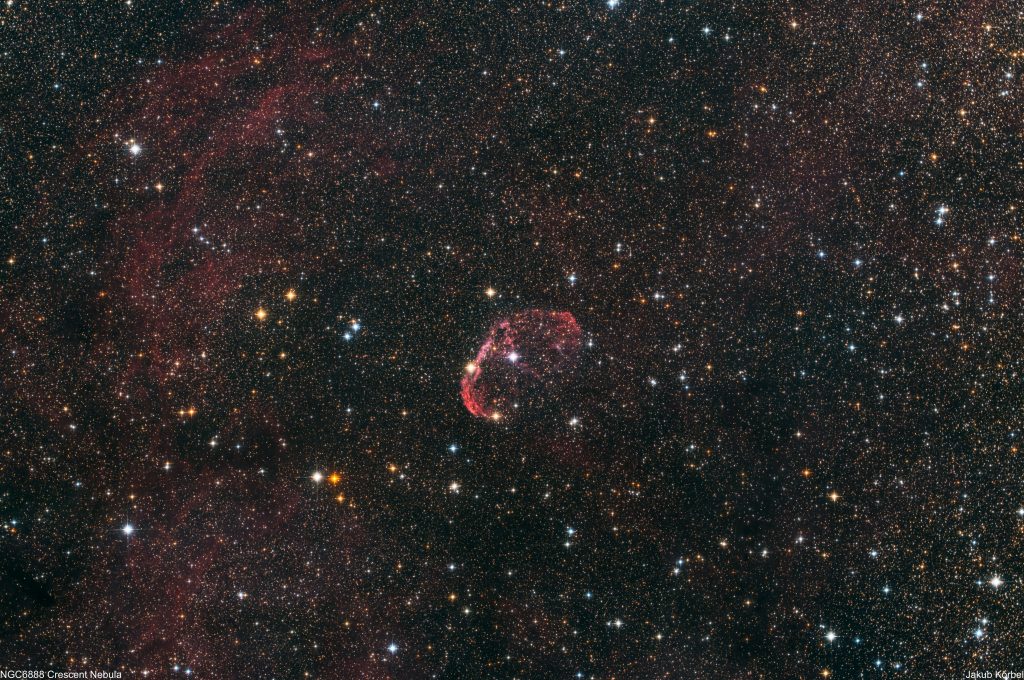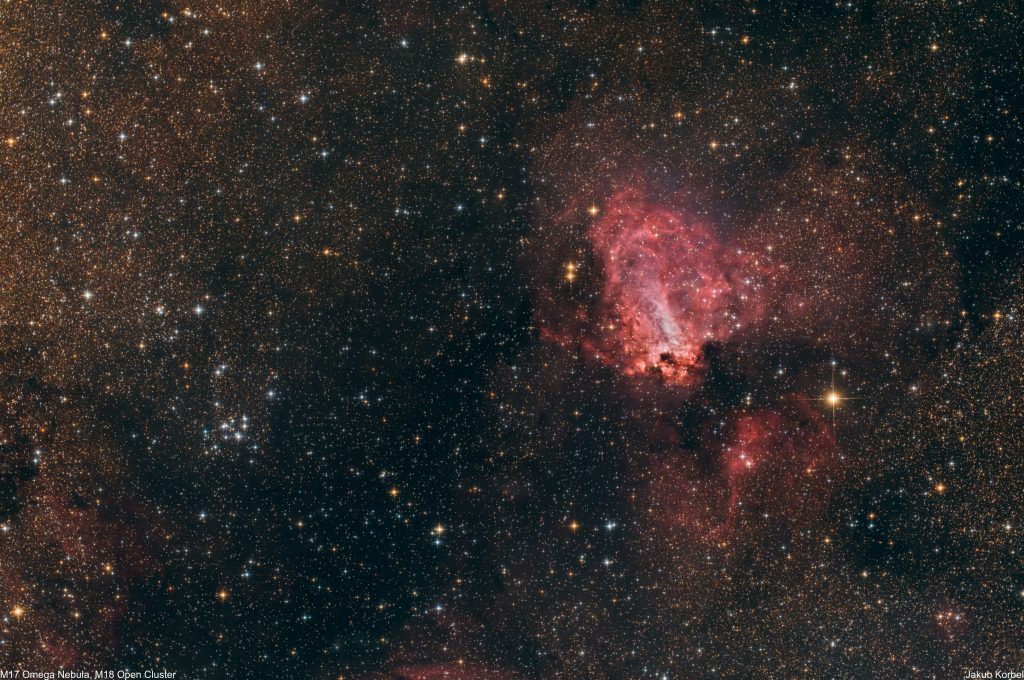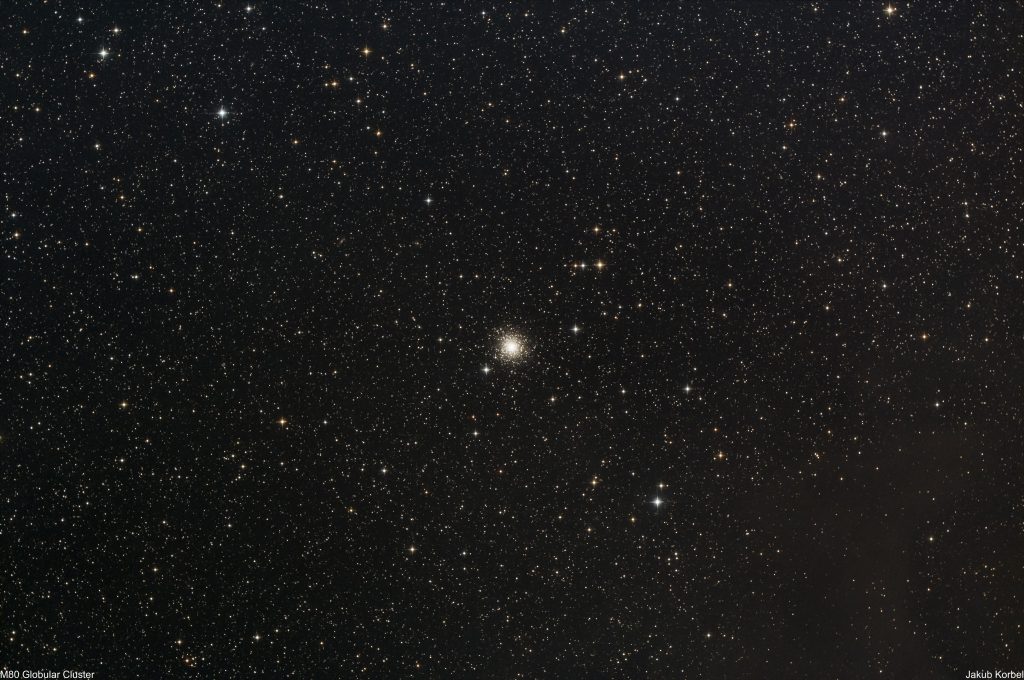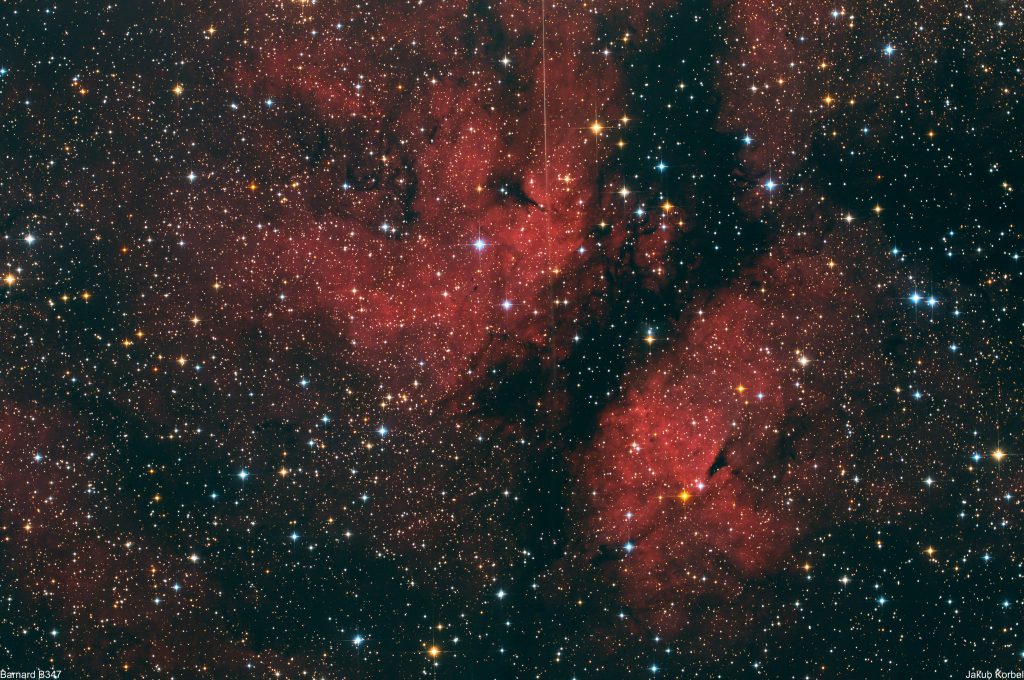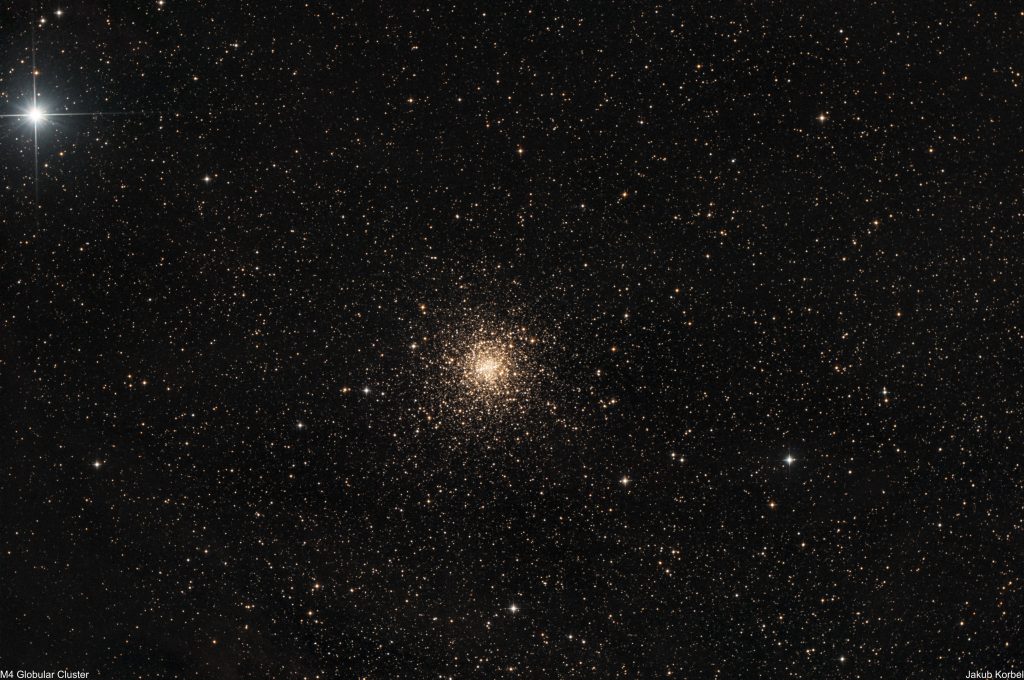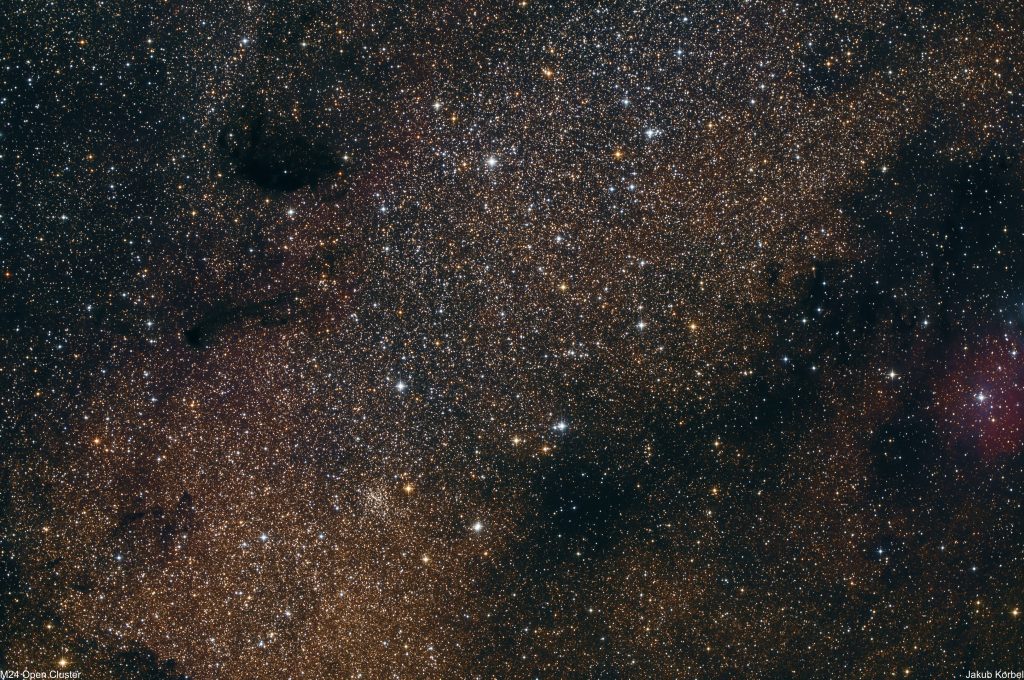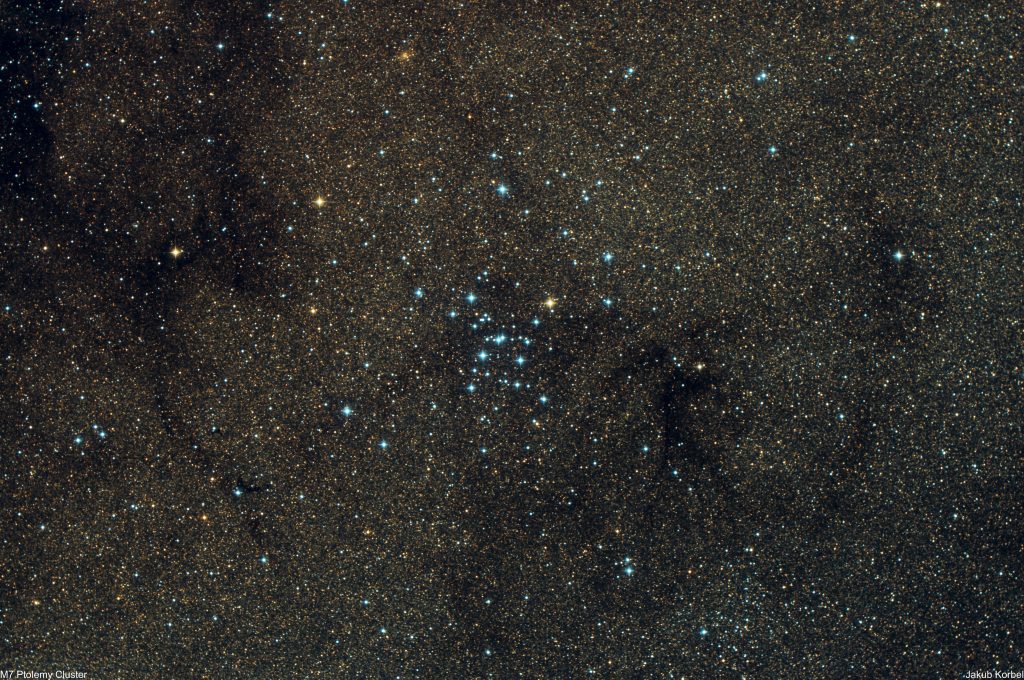Messier 28 is a globular cluster located in constellation Sagittarius. Center of Milky Way takes care about the background, which is filled by many stars. The cluster is 17900 light-year away from the Solar system and it has diameter approximately 60 light-years.
Technical details:
| Telescope | Newton 150/600 mm |
| Aperture | 150 mm |
| Focal length | 660 mm |
| Mount | iOptron CEM25P |
| Autoguiding | QHYCCD miniGuideScope 130 mm f/4.3, ZWO 174 MM |
| Camera | ZWO 071 Pro @-10C |
| Corrector | Explore Scientific HR coma corrector |
| Filters | Astronomik L-1 - UV IR Block Filter |
| Exposure | 25x120s, Gain 134, bin 1x1, |
| Date | 2018-09-10 |

